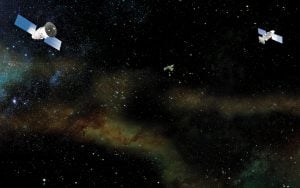Once, people who caught fish for a living would consult the sky for signs of storms and then set off in their boats, hoping for the best. Today, they rely on different types of clouds — the ones that store data.
And fishing crews are not the only ocean workers who need the latest information. A data revolution is cascading across the blue economy, explains Kes Morton, president and chief executive of Pisces Research Project Management Inc. in Halifax.
“The ocean industry is very much changing into a high-tech, high-knowledge industry,” she says.
In other words, knowledge is power. Better information keeps workers safe from storms, makes businesses more efficient and can generally foster wiser use of the ocean’s wealth.
“Collecting better data to make better decisions reduces the pressure on the ocean,” says Kendra MacDonald, chief executive of Canada’s Ocean Supercluster.
The Supercluster, an industry-led, government-sponsored not-for-profit, is set up to help Canada kick-start innovations in marine industries and then bring them to market. The federal government has pledged $153 million and industry has promised to match it.
But as information about the ocean becomes more and more critical to people who make their living from the sea, problems are emerging. How can the people who need the data get at it?
For example, some data are being collected by private companies for their own use. These companies may not know how to share it with others and may not feel comfortable giving it to competitors. Other vast collections of information are stored in databases accessible only to academics and researchers with access to supercomputers.
And the challenge is not just getting access to all that information, it’s also being able to read the story that information tells. So, say, being able to call up an app on your phone that lets you figure out whether a coming storm surge will flood a pier, or where a cold spot in the ocean will harm farmed fish.
To help drive the revolution in data, the Ocean Supercluster launched the $3.8-million Vitality project last year, appointing Dr. Morton of Pisces to pull together research partners from across disciplines and across Canada. On the west coast are the Tula Foundation, Hakai Institute and the University of Victoria. To the east, it’s Dalhousie University, Fundy Ocean Research Centre for Energy, Perennia Food and Agriculture Inc. and Coastal & Ocean Information Network Atlantic, in addition to Marine Renewables Canada, the St. Lawrence Global Observatory and others.






